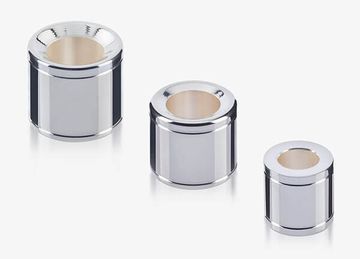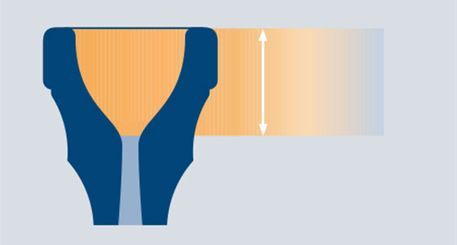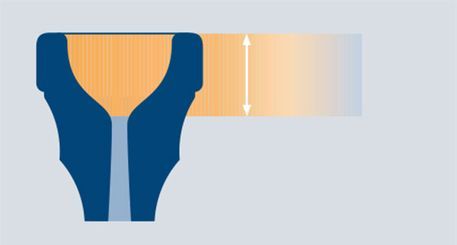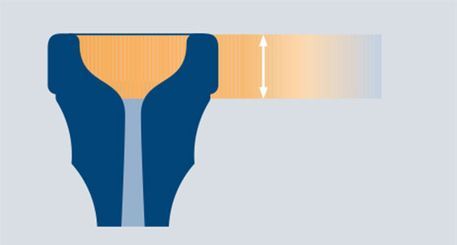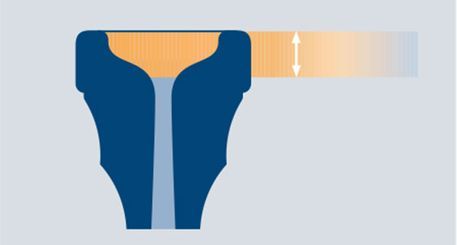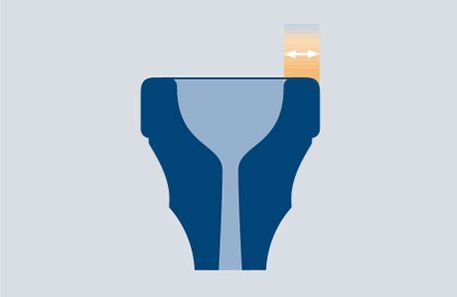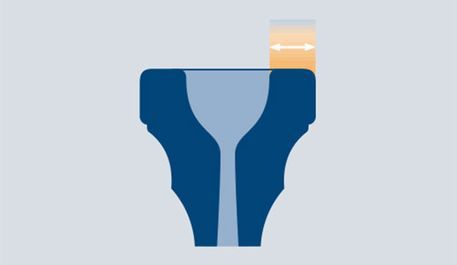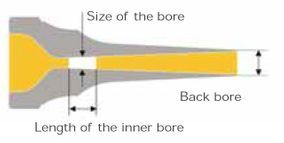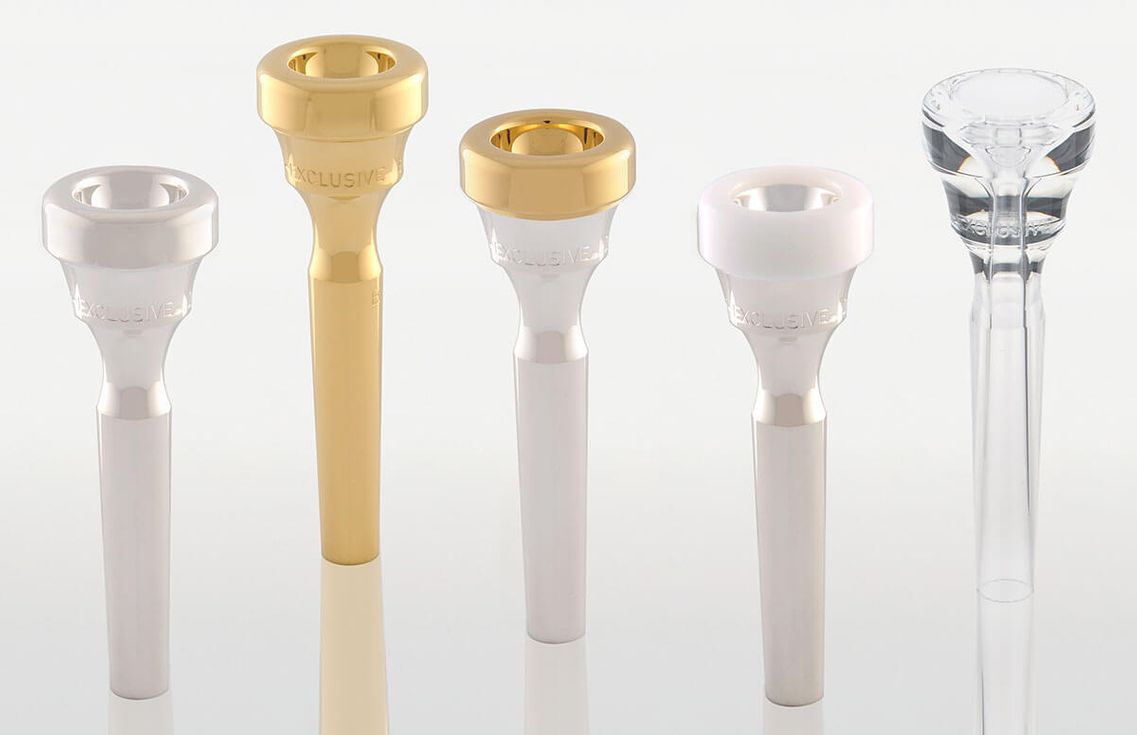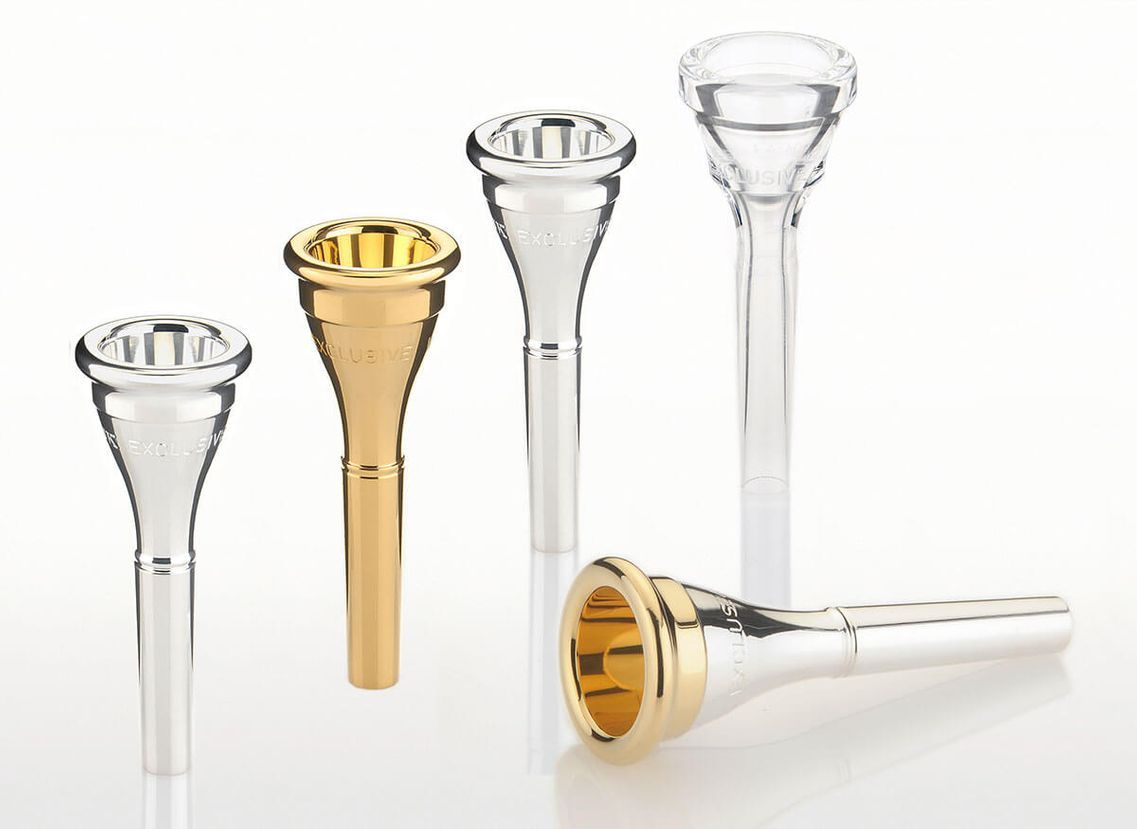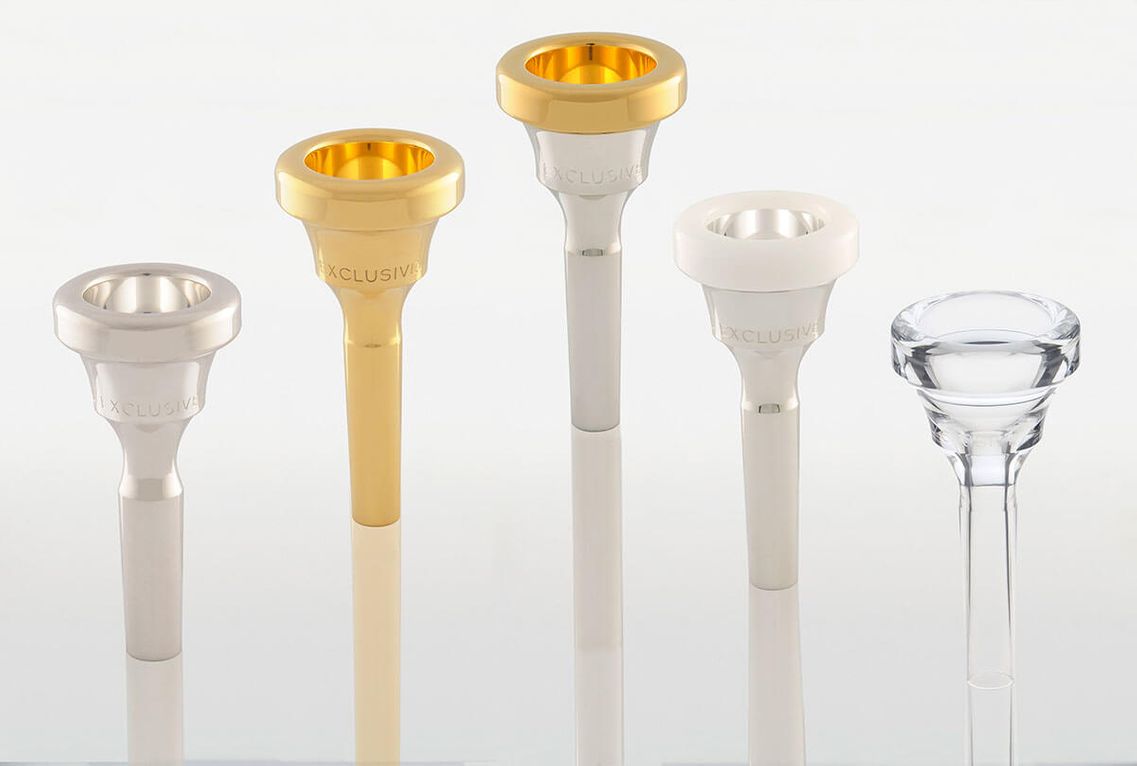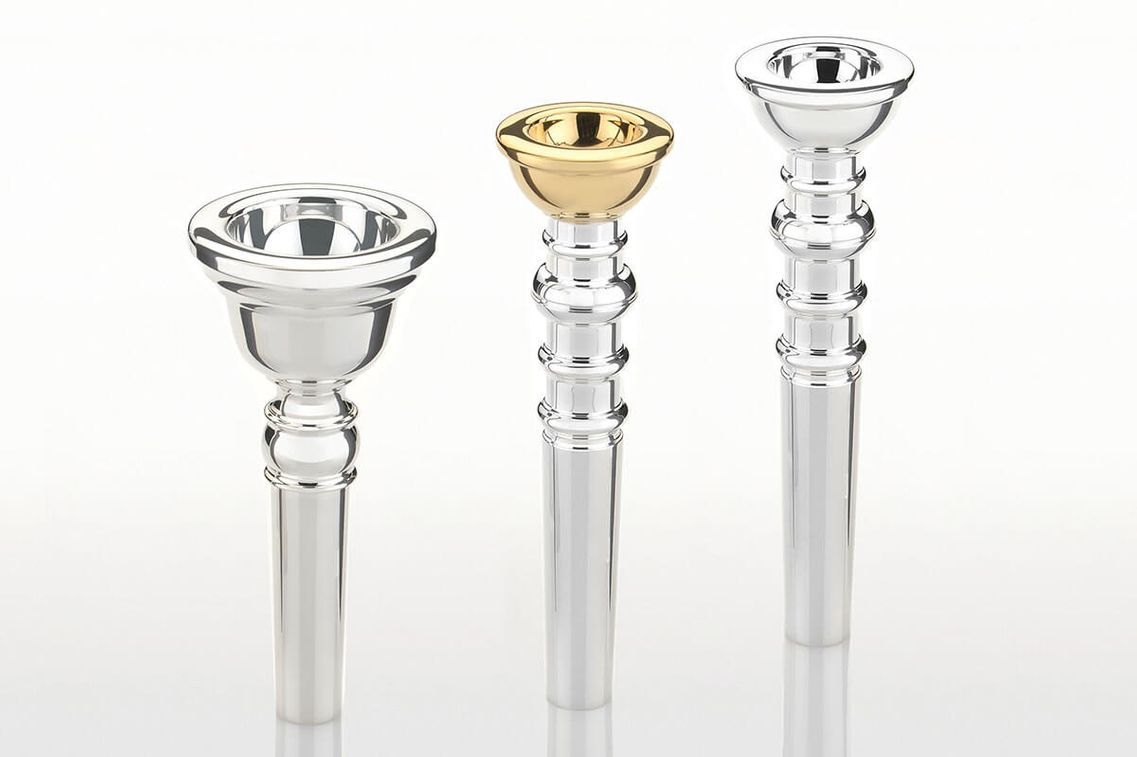The mouthpiece – link between wind player & instrument
The right choice
The Mouthpiece – link between the wind player and the instrument
Due to its function the mouthpiece is very important, as it needs to suite for the wind player and must help him fulfil his personal ideas and desires in regard to lip, timbre, sound quality, competence and stamina.
The mouthpieces of the comprehensive JK programme help the wind player to achieve the best sound and to meet his individual demands in an easier way. The characteristic sections of a mouthpiece form a functional unit.
Even slight changes on a mouthpiece section cause a changed behaviour of the mouthpiece. For the conscious selection of the right mouthpiece, the relationship between the shape and the function of the particular parts must be understood.
The material selection – decisive for excellent sound and response quality
During the development of the JK mouthpieces, we paid special attention not only to the functional interplay of the particular sections of the mouthpiece but also to the material selection. Only this way, we could achieve the excellent sound and response quality. Thanks to the use of a mouthpiece that is coated with precious metals (silver plated, gold plated), a change of the surface due to sweat or saliva can be avoided.
A mouthpiece with plastic rim is advantageous especially outside and in the cold season, because it provides a good protection against cold. Furthermore, the typical sound quality is maintained.
Perspex mouthpieces, which also protect against cold, are used especially for teaching purposes because they are completely made of transparent acrylic glass. Their sound character is smoother than the one of metal mouthpieces.
The cup diameter
determines how much lip surface can vibrate.
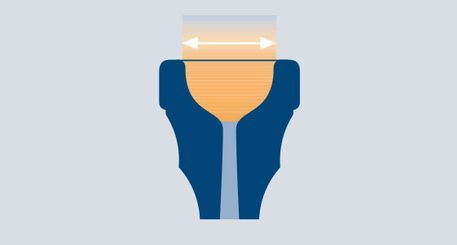
The cup diameter has to be selected big enough to guarantee the mobility of the lips.
This way, a perfect sound quality and a vibrating tone are archived. The appropriate cup diameter is determined by the physiologic properties of the individual wind player (jaw position, teeth position, constitution of the ring musculature).
The cup shapes
differentiate timbre and sound quality.
Thanks to its especially designed flow of lines, the cup run of the JK mouthpieces represents a linking unit between lips and bore.
Therefore, the JK mouthpieces distinguish themselves by an extraordinary clear and excellent sound quality.
The following specifications apply to all JK-USA Line mouthpieces:
| A models: | deep cups |
| B models: | medium deep cups |
| C models: | medium shallow cups |
| D models: | shallow cups |
| E models: | very shallow cups |
| W models: | with extra-broad rim |
| Models without letter: | medium cups |
The rim
guarantees lip mobility and comfort suit.
The rim of the JK mouthpiece is shaped to create a contact that is as comfortable as possible. The shape of the lips determines the width of the rim and also the shape of the cup.
Therefore, wind players with thick lips tend to use a mouthpiece with a wider rim and a bigger cup. The inner and the outer rim build the contour whose highest point(with all JK mouthpices) is located in the first third of the inner rim area.
If the highest point is transferred to the outside and the radius of the inner rim is amplified, the rim of the mouthpiece seems to lay more comfortably on the lips.
However, the strong fit is affected and the brilliant sound gets lost, because the tones get faint.
The bore
determines how much sound volume is developed in the instrument.
The size of the bore determines how much sound volume is developed inside the instrument. The length of the inner bore (= cylindrical part of the bore) influences the resistance and attack decisively. If it is too short, this will affect the sound stability. If it is too long, this will affect especially the high register and the intonation.
The back bore is also a very important part of every mouthpiece. It is significant for the continuation of a concentrated air column inside the instrument.
For all JK-mouthpieces the following variants of the back bores are valid:
| Back bore A1: | small, narrow back bore |
| Back bore A2: | mean size back bore |
| Back bore A3: | big, wide back bore |
The particular series-back bore is not specially indicated on the mouthpiece.
Mouthpieces
Mouthpieces Accessories
Mouthpiece bags
Cortex, lined
| No. | Mouthpieces |
| 234 | 2 Trumpets |
| 235 | 3 Trumpets |
| 236 | 4 Trumpets |
| 237 | 2 Trombones |
| 238 | 3 Trombones |
| 239 | 4 Trombones |
| 240 | 2 Tubas |
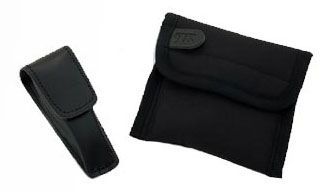
Mouthpiece brushes
| No. | Mouthpiece |
| 243 | French Horn to Trumpet |
| 244 | Trombone to Tuba |
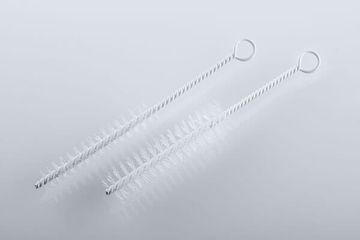
Lip control rings silver plated
| No. | Mouthpiece |
| 251 | Trumpet |
| 252 | French Horn |
| 253 | Tenor Horn |
| 254 | Trombone |
| 255 | Tuba |
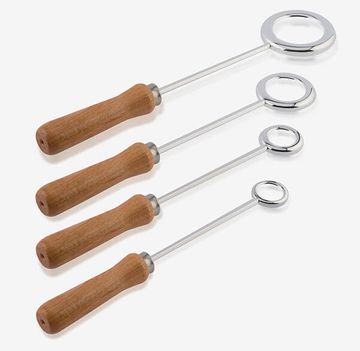
Adapter silver plated
| No. | Mouthpiece |
| 245 | French Horn – Alto Horn |
| 245a | French Horn – Parforcehorn |
| 246 | Us- to German flugelhorn shank |
| 247 | Cornet – Trumpet |
| 248 | Trombone – Baritone |
| 248a | Baritone – Bass Trombone |
| 249 | Trombone – Bass Trombone |
| 250 | B-Tuba | Bb-Tuba |
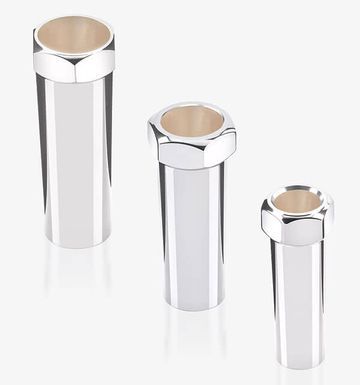
Adjusting sleeves silver plated
| No. | Mouthpiece |
| 256 | French Horn |
| 257 | Trumpet |
| 258 | Flugelhorn German shank |
| 258a | Flugelhorn American shank |
| 259 | Cornet |
| 260 | Trombone for Exclusive models |
| 260a | Trombone for USA models |
| 261 | Bass Trombone for Exclusive models |
| 261a | Bass Trombone for USA models |
| 262 | Tuba |
